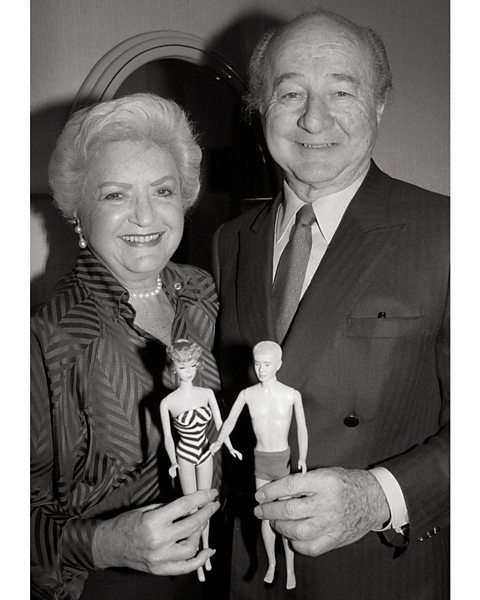The Barbie movie gives a nod to the doll's creator Ruth Handler
 Getty Images
Getty ImagesIn the new Barbie film, the doll's creator Ruth Handler plays a crucial role. She spoke to the BBC in 1997, describing what her inspiration was – and how some men didn't like the idea of a doll with a woman's shape.
Ruth Handler and her husband Elliot founded the toy company Mattel in a garage workshop in Southern California in 1945; she came up with the idea for the Barbie doll, which was launched in 1959.
In the new Barbie film, Handler, as played by former Cheers actress Rhea Perlman, serves a crucial role, or at least her ghost does – appearing first in a scene in which her creation encounters her friendly apparition at the Mattel HQ, and subsequently at the movie’s climax, where she advises Barbie about her future.
In the film, Ruth is portrayed as a benevolent but very worldly and no-nonsense soul, in comparison to the naive, idealistic Barbie. At one point, she makes a quip about her real-life run-in with the law – in 1978, she had to resign from Mattel after being indicted for falsifying financial documents.
Ruth spoke to the BBC five years before her death in 2002.
This interview is an episode of BBC Witness History, available on BBC World Service.
1. Why some men didn't like the idea of a doll with a woman's shape
On 9 March 1959, Handler took Barbie to the annual Toy Fair in New York.
RH: Half of our buyers really didn't like it. The men felt that women would not buy a doll with a woman's body – with breasts and narrow waistlines and narrow ankles, this adult sexy-looking doll. Men felt that their wives would not want it and that it wouldn't be right for a child to have that – they were wrong. Women, on the other hand, instantly flipped for that doll. The dolls no sooner landed on the counter than they were snatched up by the women buying them for their daughters.
 Getty Images
Getty Images2. How Handler thought of creating a new fashion doll
RH: My own daughter Barbie used to play with paper dolls. And I had observed her playing with paper dolls with all of her friends for years and years, and I was fascinated by the way they played and the way they project themselves… I used to try to express this idea to Elliot and to the other designers at Mattel, and I couldn't get any favourable reaction out of anyone. So gradually, I gave up on the idea.
3. The adult-figured doll inspiration she saw in a Swiss shop
Handler had an epiphany, however, when the family went on holiday to Switzerland.
RH: We ed a toy store and there in the window was a beautiful display of an adult-figured doll about 11.5, 12 inches tall, and this doll was sitting on a rope swing dressed in a very European ski clothes, and there were six or seven other of the same dolls each with a different European type ski outfit, where Barbara and I thought the dolls were just gorgeous. We just flipped – the doll's name was Lilli.
A German doll based on a comic strip published in a national newspaper, Lilli was marketed to both children and adults. Even though she was then 15, Barbara wanted one.
RH: She couldn't make up her mind which one she wanted because each ski outfit was different. And so I said to the lady in the store, "Can I buy this style and buy that costume">window._taboola = window._taboola || []; _taboola.push({ mode: 'alternating-thumbnails-a', container: 'taboola-below-article', placement: 'Below Article', target_type: 'mix' });
